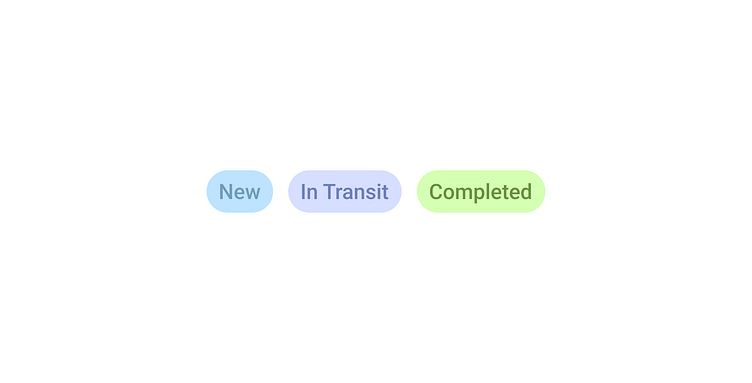Improving Status Updates for a Better User Experience
Status updates play a crucial role in digital interfaces, particularly in logistics, e-commerce, and service tracking platforms. Clear, concise, and relevant statuses ensure that users—whether shippers, customers, or partners—understand their shipments' progress without confusion. However, not all internal process statuses are meaningful to external users.
The Importance of Clear Status Updates
From a User Experience (UX) perspective, status labels should be:
Relevant – Only include statuses that provide meaningful information to the user.
Clear – Avoid technical or internal jargon that might be confusing.
Actionable – If a status implies that action is needed, make that clear.
Evaluating Statuses from the User’s Perspective
Consider a typical shipment tracking process with the following statuses:
New – The order has been created. ✅ Clear and useful.
Searching for Carrier – Internally relevant, but unnecessary for an external user. ⚠️
Carrier Informed – This is an internal update; users care more about pickup confirmation. ⚠️
In Transit – Clearly indicates movement. ✅
Completed – Indicates successful delivery. ✅
Missing POD (Proof of Delivery) – This is unclear to the user; it should be reworded or explained with next steps. ⚠️
Cancelled – Clearly communicates that the shipment won’t proceed. ✅
Improving Wording for Digital Interfaces
To enhance clarity, we should rethink how we present these statuses:
Instead of “Searching for Carrier” → Use “Pending Pickup” (simple and clear)
Instead of “Carrier Informed” → Use “Scheduled for Pickup” (more relevant)
Instead of “Missing POD” → Use “Delivery Unconfirmed – Contact Support” (guides the user’s next step)
Key Takeaways for UX in Status Design
Think from the user’s perspective – Not all internal process steps need to be visible.
Use simple, action-oriented wording – Avoid industry jargon and ensure users know what to expect next.
Guide the user – If an issue occurs (e.g., Missing POD), clarify what they need to do.
By refining status updates with UX best practices in mind, businesses can create a smoother, more transparent, and frustration-free experience for their users.


